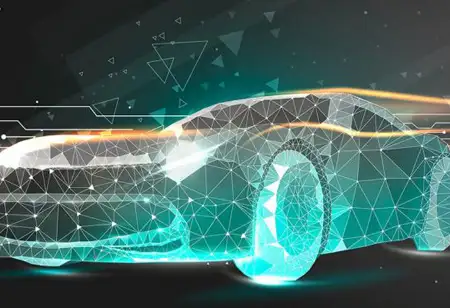Thank you for Subscribing to Auto Business Outlook Weekly Brief
Navigating the Autonomous Horizon: The Roadmap to Autonomous Vehicles
The automotive landscape is on the cusp of a monumental transformation as the quest for autonomous vehicles reaches a critical juncture.

By
Auto Business Outlook | Tuesday, September 12, 2023
Stay ahead of the industry with exclusive feature stories on the top companies, expert insights and the latest news delivered straight to your inbox. Subscribe today.

The roadmap to autonomous vehicles represents an ambitious quest to redefine mobility, promising safer, more efficient, and accessible transportation.
FREMONT, CA: The automotive landscape is on the cusp of a monumental transformation as the quest for autonomous vehicles reaches a critical juncture.
The journey towards fully automated driving has become a focal point for the automotive industry, governments, and technology companies alike, ushering in a new era of mobility that promises more excellent safety, convenience, and efficiency. This exploration delves into the roadmap, challenges, and potential of autonomous vehicles.
The Vision of Autonomous Driving:
Autonomous vehicles, often called self-driving cars, have captured the imagination of innovators and consumers' dreams. At its core, the vision is to create vehicles capable of navigating the road with little human intervention. This technology holds the promise of reducing accidents caused by human error, improving traffic flow, and increasing accessibility for individuals who are unable to drive.
Levels of Automation:
The journey towards full autonomy is divided into different levels, as defined by the Society of Automotive Engineers (SAE). These levels range from Level 0 (no automation) to Level 5 (full automation). The industry primarily focuses on Levels 2 (partial automation) and 3 (conditional automation), where vehicles can assist with specific driving tasks but still require human oversight.
Key Players in the Race:
Numerous stakeholders are actively engaged in the development of autonomous vehicles. Traditional automakers, technology giants, and startups compete to lead the way. Companies like Tesla, Waymo, General Motors, and Ford invest heavily in autonomous technology and conduct extensive testing to refine their systems.
Challenges on the Autonomous Journey:
Despite significant progress, the road to fully autonomous vehicles is fraught with challenges:
1. Safety Concerns: Ensuring the safety of autonomous vehicles remains paramount. The technology must demonstrate an ability to navigate complex and unpredictable scenarios safely.
2. Regulatory Framework: Governments worldwide are working to establish clear regulations for autonomous vehicles. These regulations must strike a balance between encouraging innovation and ensuring public safety.
3. Liability Issues: Determining liability in the event of an accident involving an autonomous vehicle is a complex legal challenge that needs resolution.
4. Ethical Dilemmas: Programming autonomous vehicles to make ethical decisions in critical situations raises moral and ethical questions.
5. Infrastructure: Existing road infrastructure was designed with human drivers in mind. Adapting roads and infrastructure to accommodate autonomous vehicles is a significant undertaking.
6. Cybersecurity: Autonomous vehicles are vulnerable to cyberattacks, and robust cybersecurity measures are essential to protect against threats.
The Evolution of Advanced Driver-Assistance Systems (ADAS):
While fully autonomous vehicles are still on the horizon, the industry is rapidly advancing its capabilities in advanced driver-assistance systems (ADAS). These systems, such as adaptive cruise control and lane-keeping assist, are already making driving safer and more convenient. They serve as building blocks for higher levels of automation and provide valuable testing grounds for autonomous technology.
The Role of Data and AI:
Data plays a crucial role in the development of autonomous vehicles. Vehicles with sensors collect vast amounts of data, which is then processed by artificial intelligence (AI) algorithms to make driving decisions. Machine learning and AI are continuously improving the ability of autonomous vehicles to recognize and respond to their surroundings.
Public Perception and Adoption:
Consumer acceptance and trust are essential for the widespread adoption of autonomous vehicles. Public perception can be influenced by high-profile accidents involving autonomous cars, making it crucial for the industry to prioritize safety and transparency in testing and deployment.
Conclusion:
The journey towards fully autonomous vehicles represents a defining chapter in the automotive industry's history. While significant strides have been made, numerous challenges, from safety concerns to regulatory complexities, must be addressed. As technology continues to evolve, the vision of autonomous driving remains tantalizingly close, promising a future where road safety is dramatically improved, traffic congestion is reduced, and mobility becomes more accessible for all. In this transformative journey, the roadmap to autonomous vehicles is reshaping transportation, challenging conventions, and redefining the future of mobility.






